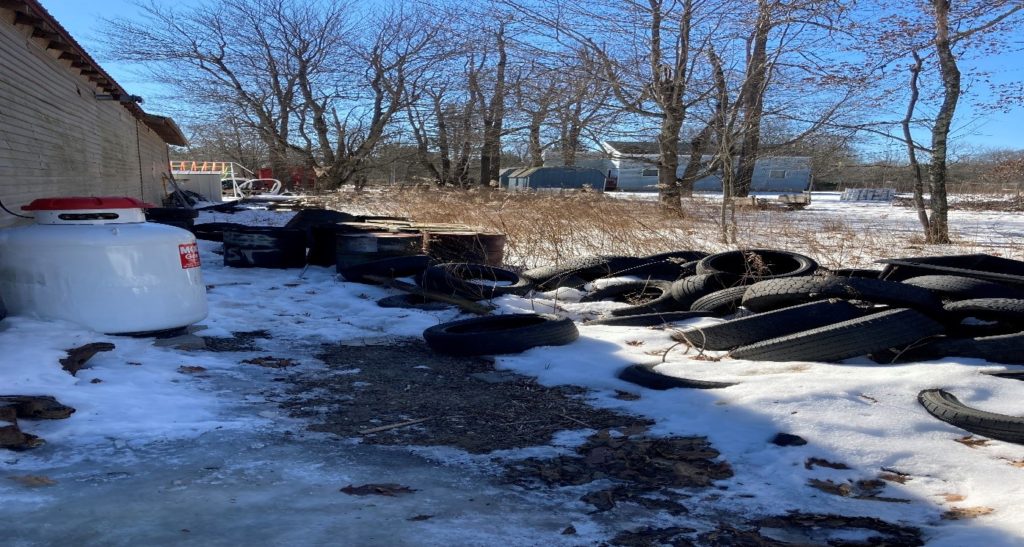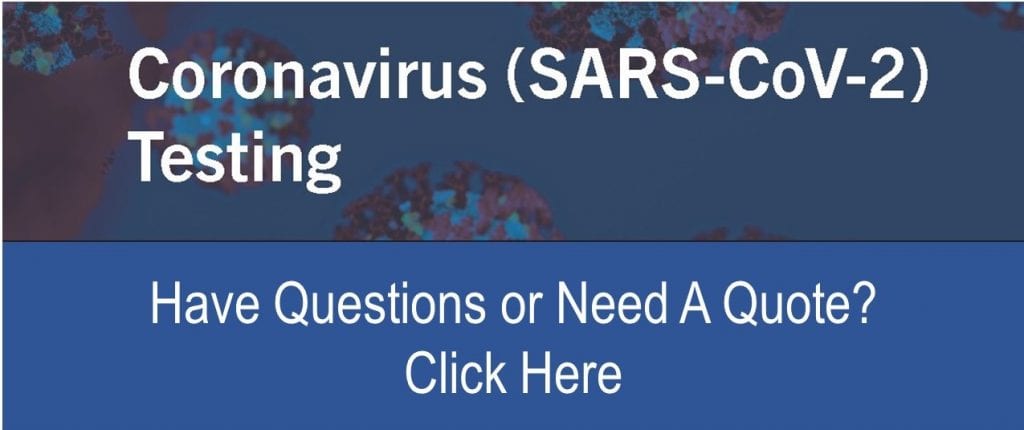
Phase I ESA vs Transaction Screen
My lender says I have to perform environmental due diligence to qualify for a loan for purchasing a commercial property. I am told I can do a Phase I Environmental Site Assessment (Phase I ESA) or a Transaction Screen. What is the difference?
That is a great question because there are some similarities and some key differences between a Phase I ESA and a Transaction Screen.
ASTM International has developed Standards for both types of environmental due diligence processes:
- Standard Practice for Environmental Site Assessments: Phase I Environmental Site Assessment Process (E1527) and
- Standard Practice for Limited Environmental Due Diligence: Transaction Screen Process (E1528).
In this article we will look at the differences between the two processes and discuss where they can, or should, be applied.
Goal of a Phase I ESA vs Goal of a Transaction Screen
The goal of conducting a Phase I ESA is to identify Recognized Environmental Conditions (RECs). ASTM 1527 defines Recognized Environmental Condition as “(1) the presence of hazardous substances or petroleum products in, on, or at the subject property due to a release to the environment; (2) the likely presence of hazardous substances or petroleum products in, on, or at the subject property due to a release or likely release to the environment; or (3) the presence of hazardous substances or petroleum products in, on, or at the subject property under conditions that pose a material threat of a future release to the environment.”
The goal of conducting a Transaction Screen is to identify Potential Environmental Concerns (PECs). ASTM 1528 defines a Potential Environmental Concern as “ the possible presence of any hazardous substances or petroleum products on a property under conditions that indicate the possibility of an existing release, a past release, or a threat of a future release of any hazardous substances or petroleum products into structures on the property or into the ground, ground water, or surface water of the property. The term includes hazardous substances or petroleum products even under conditions in compliance with laws. (Note that “threat of release” is generally understood to be present when hazardous substances or petroleum products are poorly managed (for example in corroded tanks or damaged containers) but the release of the contaminants has not yet occurred, and there is an opportunity to take response action to prevent a release of the contaminants.)”
Liability Protections Offered by Phase I ESA vs Transaction Screen
If a buyer of commercial real estate desires to conduct environmental due diligence in order to qualify for one of the Landowner Liability Protections (LLP) under the Comprehensive Environmental Response, Compensation, and Liability Act (CERCLA), then the due diligence must conform with the “Standards and Practices for All Appropriate Inquiries,” 40 C.F.R. Part 312. A Phase I ESA, conducted in accordance with ASTM 1527 will meet these standards. LLP protections include the bona fide prospective purchaser liability protection, contiguous property owner liability protection, and innocent landowner defense from CERCLA liability. For a detailed explanation of the EPA’s All Appropriate Inquire Rule and the liability protections it offers, download my free Phase I e-book.
If a buyer of a parcel of commercial real estate wishes to conduct a more limited environmental due diligence, less than a Phase I ESA, then a Transaction Screen (ASTM 1528) should be applied. This practice will not satisfy the requirement to conduct all appropriate inquiries into the previous ownership and uses of the property consistent with “generally accepted good commercial and customary standards and practices” as defined in 42 U.S.C. §9601(35)(B). The Transaction Standard does not offer liability protection under CERCLA, but may meet environmental due diligence standards for certain transactions.
Phase I ESA vs Transaction Screen Differences
The Phase I ESA process requires a Phase I report that includes the four main AAI components:
- Interviews with owners, operators, and occupants.
- Review of government records including historical aerial photographs, historical city directories, historical topographic maps and historical fire insurance (Sanborn) maps and searches for recorded environmental cleanup liens.
- Visual inspections.
- Report including declaration by an environmental professional.
The report must be conducted or updated within 180 days of the dates on which the main AAI components were conducted.
The Transaction Screen process consists of:
- Asking questions contained within the transaction screen questionnaire of owners and occupants of the property.
- Observing site conditions at the property with direction provided by the transaction screen questionnaire.
- To the extent reasonably ascertainable, conducting limited research regarding certain government records and certain standard historical sources.
A transaction screen meeting or exceeding the ASTM standard and completed more than 180 days previously may be used in its entirety if, in the reasonable judgment of the user, the prior transaction screen meets or exceeds the requirements of this practice and the conditions at the property and surrounding properties are not likely to have changed materially since the last transaction screen or other due diligence was conducted.
Phase I ESA vs Transaction Screen – Preparer Qualifications
A Phase I ESA must be prepared by a Qualified Environmental Professional meeting the education, training, and experience requirements as set forth in 40 C.F.R. §312.10(b). To meet these requirements, the EPA established the following minimum qualification standards for Environmental Professionals (EPs) who prepare Phase I ESAs. To meet these standards, a person must meet one of the four criteria listed below:
- Hold a Professional Engineer’s or Professional Geologist’s license or registration and have three years of relevant full-time work experience.
- Be licensed or certified by a state, tribe, or the Federal government to perform All Appropriate Inquiries and have three years of relevant full-time work experience.
- Have a Baccalaureate degree or higher from an accredited institution of higher education in a relevant discipline of engineering, environmental science, or earth science, and five years of relevant full-time work experience.
- Have 10 or more years of relevant full-time work experience.
A Transaction Screen does not need to be performed by an Environmental Professional. The user may conduct the TSA according to the ASTM standard or may delegate it to an employee or agent or may contract with a third party. No matter who prepares the Transaction Screen report, the user remains responsible for the decision to conduct limited environmental due diligence and the impact of that decision on risk management
In selecting options permitted by the Transaction Screen, preparers should satisfy themselves that they are qualified to undertake the analysis contemplated by that option. Unless otherwise agreed to by the user and the preparer, it is not the responsibility of the preparer to draw conclusions regarding affirmative or unknown answers.
Cost of Phase I ESA vs Transaction Screen
Since the Phase I ESA has more requirements and offers greater environmental liability protection than a Transaction Screen, it has significantly higher costs. Costs vary depending upon the size and complexity of the property. As a general rule, a Transaction Screen costs approximately 40% less than the cost of a Phase I ESA.
For more information see my article on Phase I ESA Costs.
Phase I ESA vs Transaction Screen – How to Decide?
The appropriate amount of environmental due diligence will be guided by the type of property subject to assessment, the expertise and risk tolerance of the user, the information developed in the course of the inquiry and specific lender requirements.
The user should be cautious in applying due diligence practices to properties with known current or historic handling of hazardous substances or petroleum products.
A Phase I ESA should always be obtained if:
- A current or former business at the property sold, supplied, or dispensed fuel, gasoline, heating oil, and other hazardous materials.
- If there are actual or suspected hazardous substances on the property (or in the subsurface soil and/or groundwater), either from current, past, or future activities on the property itself, or current or past activities on surrounding properties.
- There is a known or potential threat to the environment or potential exceedance of any cleanup standard.
- There is an issue that has been, currently is, or will potentially become the subject of an enforcement action under Federal or state laws, especially cleanup-related and waste-related state laws.
- A property has been used for an environmentally-sensitive industry or is in close proximity to a business in an environmentally-sensitive industry. For examples of Potential Environmentally-Sensitive Industries, see my article “Is a Phase I necessary for every Commercial Property Purchase?”
Options Besides Phase I ESA or Transaction Screen?
Not every property will warrant the use of a limited environmental assessment such as the transaction screen. Some people in lieu of or in addition to the ASTM Phase I ESA and Transaction Screen processes opt for modified due diligence processes such as:
Desktop Transaction Screen
A desktop Transaction Screen is a limited-scope assessment that does not include a visit by the environmental professional to the subject property. Due to its limited scope, the desktop report is often used as a cost-effective initial screen of a property to determine the potential for environmental liability. If such a concern is identified, then often the evaluation is elevated to a more comprehensive report such as the Phase I ESA, with the cost of the initial report being rolled into the Phase I ESA.
The environmental risk of the subject site is evaluated through a review of records and pertinent information that may include:
- Government records (a database search and/or other regulatory records)
- Historical records such as Sanborn fire insurance maps, city directories, aerial photos, and topographic maps
- Environmental questionnaires
Environmental Due Diligence Beyond ASTM Scope
The following are several non-scope considerations that are not part of either the Phase I ESA or the Transaction Screen processes that prospective purchasers may want to assess in connection with commercial real estate. This is not an all-inclusive list of potential additional due diligence considerations and no implication is intended as the relative importance of inquiry into such non-scope considerations.
- Asbestos-containing materials
- Radon
- Lead-based paint
- Lead in drinking water
- Wetlands
- Regulatory compliance
- Cultural and historic resources
- Industrial hygiene
- Health and safety
- Ecological resources
- Endangered species
- Indoor air quality
- High voltage power lines
Conclusion
Environmental due diligence processes are used by lenders, brokers, and investors as part of a tiered approach to environmental risk management. Hoping that your environmental risk is under control does not make it go away and simply ignoring your risk does not make it cease to exist. Cleanup liability costs for unsuspecting buyers can exceed the value of a property. Do your due diligence.

